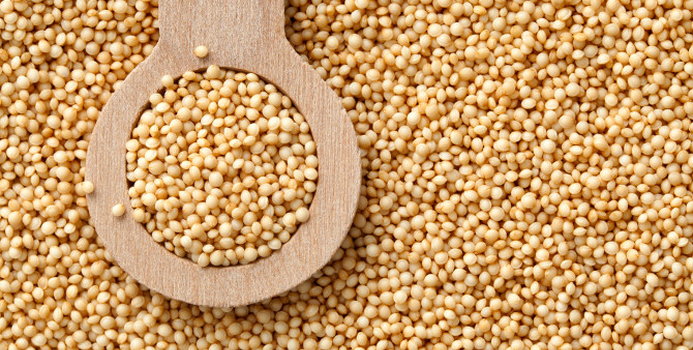Amaranth is a genus of herbs that contain over 60 species with a variety of colors and uses. Many of these species are considered weeds; but, around the world many individuals consume it in the form of grains, vegetables and cereals due to its many health benefits. Amaranth has a long history and has been in use for many centuries by many different cultures. Grain amaranth is easy to cook, is highly palatable, and can easily be included in snacks and dishes. Amaranth is grown and consumed as a leafy vegetable in many countries around the world. It is commonly boiled, steamed or included in soups and stir-frys. Cooked amaranth is 90% digestible.
Amaranth Around the World
Most species of amaranth are believed to have originated in South America and Mexico. Aztecs in the Pre-Columbian era thought of amaranth as having supernatural powers and used it in religious ceremonies. The various species are now sold throughout many countries including India, China, Malaysia, Indonesia, Taiwan and the Caribbean. While still new to Europe and America, amaranth seeds, such as buckwheat and quinoa, are becoming more popular in restaurant dishes and food stores. In Mexico, a sugary snack, called alegria, is made from the popped seeds. Amaranth is made into a gruel called sattoo in Nepal. In Peru, people ferment the seeds to produce a type of beer. In Africa, grain amaranth is a common food source and is valued for its ability to improve nutrition while also supporting rural development and sustainable farming. In Africa, this vegetable is even recommended by doctors for people who have low red blood cell counts. Other health benefits of amaranth include:
Vitamins & Minerals
Amaranth is highly vitamin-rich and is a good source of vitamins A, B6, K and C, a well as folate and riboflavin. Amaranth includes numerous minerals. It is a terrific source of manganese and also iron, calcium, copper, magnesium, phosphorus and potassium.
Protein
Amaranth contains large amounts of protein, up to 30% more than wheat flour, rice and oats. It also contains no gluten, a protein that can be found in many true grains. Some people are allergic to this protein and their bodies are unable to digest it.
Dietary Fiber & Amino Acids
Dietary fiber and essential amino acids, including lysine, which has clinically shown potential for cancer treatment, are prominent in amaranth. It also contains relatively low cholesterol levels.
Disease Prevention & Immune Support
The oils in amaranth have been proven to assist in the prevention and treatment of hypertension and heart disease. Regular consumption of amaranth can help to reduce cholesterol levels and lower blood pressure. Amaranth has also been said to help boost the immune system.
Grey Hair Prevention
Some studies have even found that grain amaranth may even help prevent gray hair.
Cautionary Advice
Amaranth has a moderately high level of oxalic acid, which inhibits much of the absorption of calcium and zinc. It should be avoided or consumed in moderation by those with diseases such as gout, kidney problems or rheumatoid arthritis.



